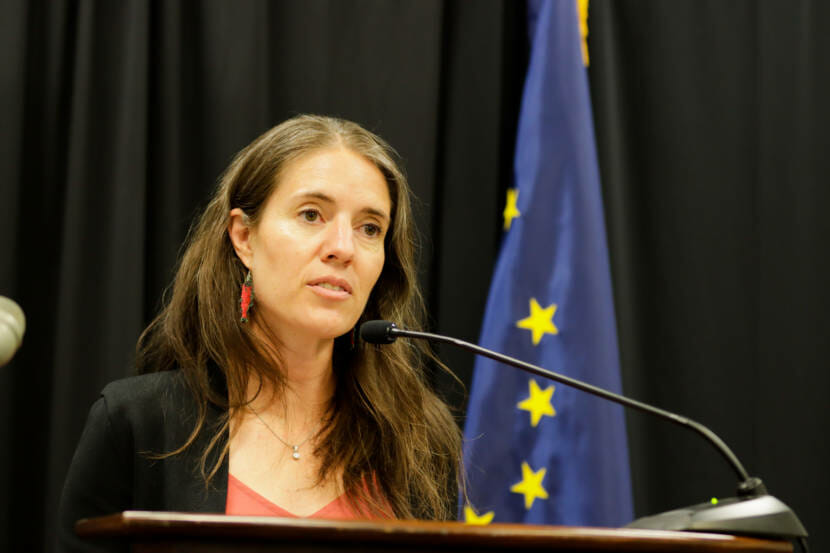
The Alaska Department of Health and Social Services sent out its last COVID-19 data summary on Wednesday via email and social media. It marks a shift from focusing on case counts to tracking broader trends across the state.
The department will continue to send its weekly COVID and flu update on Fridays. Alaska’s chief medical officer, Dr. Anne Zink, said those updates will still include COVID case counts.
“But we try to put that into a larger context,” she said. “We also talk about how many people show up to the emergency department for COVID-like illness, how many people are showing up to the emergency department for influenza-like illness, and how full the hospitals are in general.”
Wednesday’s data summary reported 34 hospitalizations and 546 resident cases in the last week. Zink said it’s become harder to track case numbers as home tests have become more popular because those results don’t always get reported to the state.
“It’s become increasingly problematic as we have more home testing, and why we need to use it in combination with other data sources to give Alaskans the best sense that they can of the overall transmission of respiratory illnesses in their community at any given time,” Zink said.
Zink said there are important differences between COVID and the flu to keep in mind when it comes to risk level. Older Alaskans are still at the highest risk for severe illness and death due to COVID, while flu carries increased risk for both the very young and the very old.
“People should consider getting flu vaccines now, anyone six months and older, particularly the young and the old,” she said. “Or, honestly, people who interact with the young or the old, which is a lot of us.”
The bivalent COVID booster — which teaches the immune system to fight both the original COVID strain and the omicron variant – has been available for about two weeks. It’s safe to get the booster and the flu vaccine at the same time.
According to state data, 28% of all Alaskans aged 6 months and older have received a first booster dose. In Juneau, 44% of residents 6 months and older have received a first booster, and 31% of Anchorage residents have. The lowest percentage is in the Matanuska-Susitna Borough, at nearly 17%.
Zink said many hospitals and long-term care facilities are administering COVID boosters and flu vaccines at the same time, and she expects booster numbers to increase as those efforts continue.
Zink recommends getting a flu shot by the end of October. And as fall turns to winter, she said, taking care of your mental and physical health is extra important.
